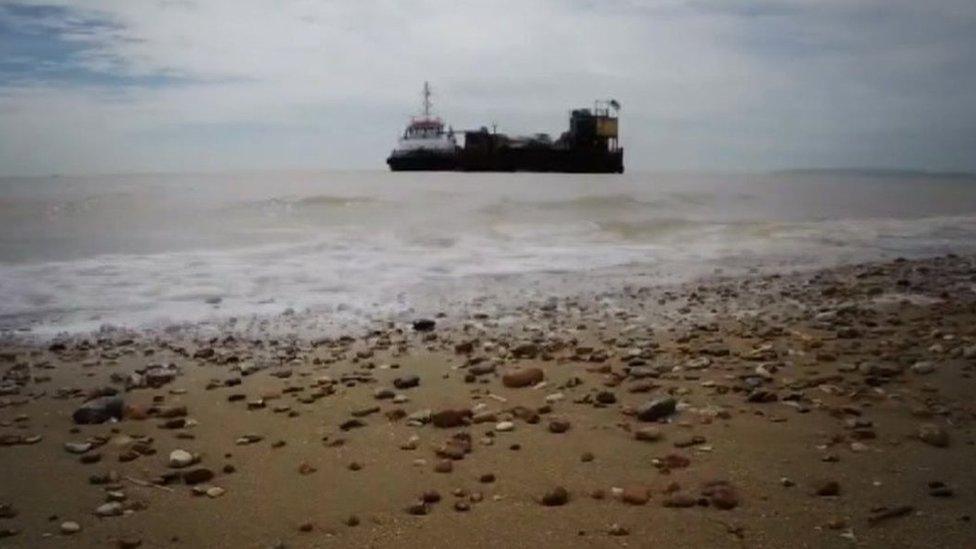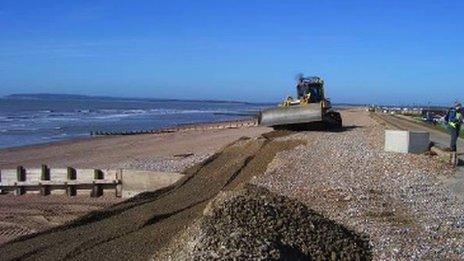Homes protected by £30m Broomhill Sands sea defence
- Published
Timelapse footage was captured during the building work
A £30m sea defence scheme that will protect more than 1,300 homes and 100 businesses has been completed.
The Broomhill Sands scheme covers 1.3 miles (2km) of beach from Camber in East Sussex to Lydd Ranges in Kent.
The scheme, which used rocks shipped from Norway, is part of a wider coastal erosion management strategy.
Environment Agency operations manager Ian Nunn said it was one of the agency's largest construction projects in the South East.
Brigitte Bass, who was part of Defend Our Coast, which began a campaign for the defences in 2004, said: "We are obviously delighted. It has taken a long time but we got there in the end."
She had faced losing her former home, one of the Coastguard Cottages at Camber.
"I think it was a question of pointing out that it wasn't just a matter of a few houses which would have been lost to the sea," she said.
"It was actually encompassing a great area ie the whole of the [Romney] Marsh and rural communities should be just as entitled to be protected from coastal flooding as urban areas or very much built-up areas."

The scheme stretches from Camber to Lydd Ranges
The sea defence has rock revetments - sloping structures that absorb wave energy - along with a new wave wall, extra beach shingle and new timber groynes.
It includes a wider path along the top of the defence and new pedestrian-access steps and ramps.
Mr Nunn said it was part of the Folkestone to Cliff End strategy that would protect 14,500 homes and businesses, Dungeness nuclear power station, wildlife habitat and two Ministry of Defence firing ranges.
He said more than 250,000 tonnes of rock would absorb wave energy and protect the defence itself.
- Published11 August 2014
